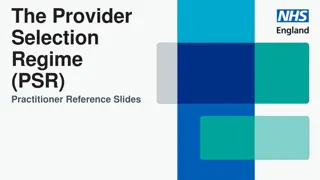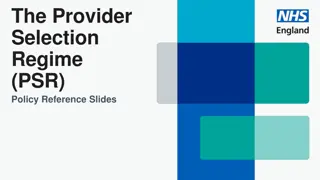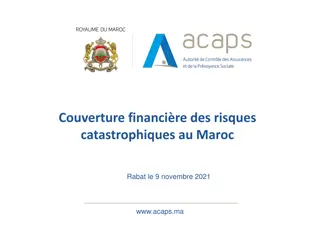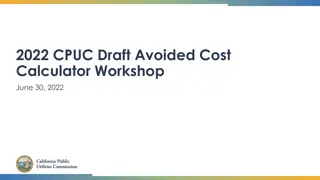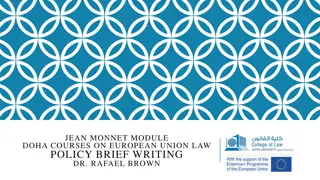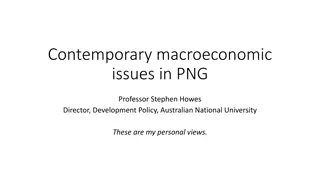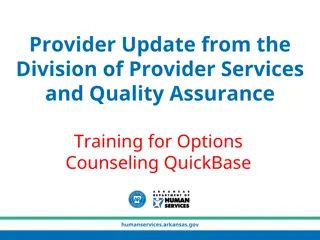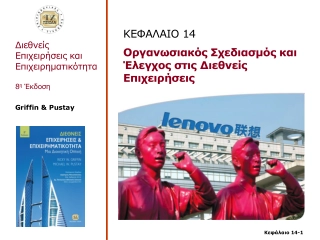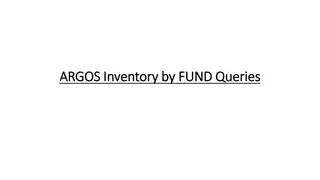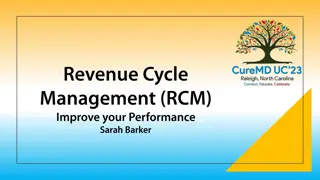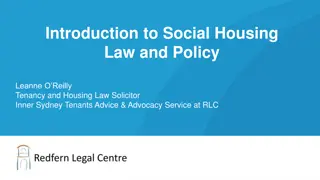Understanding the Provider Selection Regime (PSR) Draft Policy Reference Slides
These reference slides provide support for relevant authorities in applying the new Provider Selection Regime (PSR) in England. They outline the key features, criteria, and processes involved in the PSR implementation, offering guidance for practitioners, commissioners, and procurement leads. The PSR aims to introduce flexibility and transparency in the selection of health care service providers, with a focus on statutory regulations and guidelines. The slide deck is part of a comprehensive toolkit aimed at aiding organizations in implementing the PSR effectively.
Download Presentation
Please find below an Image/Link to download the presentation.
The content on the website is provided AS IS for your information and personal use only. It may not be sold, licensed, or shared on other websites without obtaining consent from the author. Download presentation by click this link. If you encounter any issues during the download, it is possible that the publisher has removed the file from their server.
Presentation Transcript
The Provider Selection Regime (PSR) Draft Policy Reference Slides
The Provider Selection Regime (PSR) Draft Policy Reference Slides These reference slides are intended to support relevant authorities with their application of the new Provider Selection Regime (PSR); however, they are not exhaustive and should not be used as guidance. Relevant authorities must follow the regulations and associated statutory guidance when applying the PSR. Throughout this slide deck requirements set out in the PSR regulations that relevant authorities must comply with are denoted by blue circles in the top left corner. The relevant regulations are inserted into the middle of the circle. Throughout this slide deck recommendations by NHS England as set out in the statutory guidance are denoted by orange circles in the top left corner.
PSR implementation toolkit This slide deck is aimed at senior managers who will need to have some understanding of the PSR, but who will not themselves be applying the PSR day-to-day. This slide deck is part of the PSR implementation toolkit, containing the following: Overview slide deck, providing a quick introduction to the PSR and is aimed at senior leaders Policy slide deck, providing some more detail about the key features of the PSR and is aimed at commissioners and procurement leads Practitioner slide deck (this one), providing in-depth information about the steps in the PSR processes and is aimed at practitioners End-to-end process maps for all provider selection processes in the PSR, aimed at practitioners FTS guide, providing information about which notices need to be published on FTS and is aimed at practitioners Flow-charts, providing a visual representation of some of the key processes in the PSR. 3 |
PSR implementation toolkit These slides cover: The aims and scope of the PSR, and the new flexibilities that it offers. What the different provider selection processes are and when to apply them. The transparency requirements and the need for robust record keeping. Details of the new regime s five key criteria . What mixed procurement is and when it might be used. What permitted contract modifications are. How provider selection decisions are reviewed under the PSR. The transitional arrangements.
Introduction This policy webinar is part of a wider toolkit aiming to help organisations to implement the PSR. Other resources are: The Health Care Services (Provider Selection Regime) (England) Regulations 2023 1. The PSR statutory guidance 2. Practitioner webinars (upcoming) 3. Find a Tender Service (FTS) guide 4. Frequently Asked Questions document (FAQs) 5. PSR toolkit, including end-to-end process maps for selection processes 6.
What do you need to know? The Health and Care Act 2022 introduced a new procurement regime for selecting providers of health care services in England: the Provider Selection Regime (PSR). The PSR has been designed to introduce: a flexible and proportionate process for selecting providers of health care services so that all decisions are made in the best interest of people who use the services 1. the capability for greater integration and enhanced collaboration across the system, whilst ensuring that all decisions about how health care is arranged are made transparently 2. Opportunities to reduce bureaucracy and cost associated with the current rules 3.
Legislative changes Regulation 2 The PSR is intended to come into force on 1 January 2024 and will replace the: Public Contracts Regulations 2015, when procuring health care services National Health Service (Procurement, Patient Choice and Competition) Regulations 2013 Organisations, referred to as relevant authorities under the PSR, are required to follow the PSR when arranging health care services, irrespective of whether the providers they are considering are from the NHS, the independent, or the voluntary sector. Relevant authorities are: NHS England Integrated Care Boards (ICBs) NHS trusts and foundation trusts Local authorities or combined authorities. Relevant authorities must continue to comply with other legal obligations and duties.
Procurement principles Regulation 4 Relevant authorities must act: with a view to secure the needs of the people who use the services, including through integrated service delivery 1. with a view to improve the quality of the services, including through integrated service delivery 2. with a view to improve the efficiency of the services, including through integrated service delivery 3. 4. Transparently, fairly, and proportionately.
Scope Regulation 3 Schedule 1 The PSR will apply to the arranging of health care services in England. Broadly, services within scope are: Examples of procurements not in scope of this Regime: services that provide treatment, diagnosis or prevention of physical or mental health conditions to individuals or groups of individuals (i.e., patients or service users) such as hospital, community, mental health, primary health care, palliative care, ambulance, and patient transport services for which the provider requires CQC registration goods (i.e., medicines, medical equipment) social care services non-health care services or health-adjacent services (i.e., capital works, business consultancy, catering) that do not provide health care to an individual. substance use treatment services, sexual and reproductive health, and health visitors arranged by local authorities.
Mixed procurements Regulation 3 The PSR allows relevant authorities to arrange a contract comprising of a mixture of in- scope health care services and out of scope services or goods when both of the below statements are true: The main subject matter of the procurement is relevant health care services in England. 1. This means that the health care service element must be more than 50% of the value of the contract. The relevant authority is of the view that the other goods or services could not reasonably be supplied under a separate contract. 2. This means that the relevant authority is of the view that procuring the health care services and the other goods and services separately would, or would be likely to, have a material adverse impact on the relevant authority s ability to act in accordance with the procurement principles.
Making a decision Regulation 6 Relevant authorities must identify which provider selection process is applicable for the health care service they are arranging. The processes are: Direct award processes: A, B, and C Most suitable provider process Competitive process
Overview of the decision-making circumstances Regulation 6 The competitive process The most suitable provider process Direct award processes A B C Allows the relevant authority to make a judgement on which provider is most suitable based on consideration of the key criteria. Award without competitive tender. The People have a choice of providers, and the number of providers is not restricted by the relevant authority. existing provider is satisfying the existing contract and will likely satisfy the proposed new contract, and the contract is not changing considerably. Where the relevant authority cannot use any of the other processes or wishes to run a competitive exercise. The existing provider is the only capable provider.
Getting to the right decision Regulation 6
Framework agreements Regulation 16 Regulation 17 Regulation 18 Relevant authorities may establish framework agreements under the PSR to arrange in- scope health care services. To note: Establishment of the framework agreement must follow the competitive process. 1. After a framework agreement has been established, relevant authorities that are party to the framework agreement may award contracts to providers also party to the agreement. 2. Relevant authorities can award contracts based on a Framework Agreement in two ways: 1. Without competition, so long as this is provided for in the terms and conditions of the Framework Agreement. Following the Competitive Process mini-competition, in line with the competitive process. Relevant authorities can award contracts based on a framework agreement in two ways: without competition, so long as this is provided for in the terms and conditions of the framework agreement. 3. 3.
Key criteria Regulation 5 There are five key criteria that must be considered when assessing providers under direct award process C, the most suitable provider process, or the competitive process. These are: Quality and innovation 1. Value 2. Integration, collaboration, and service sustainability 3. Improving access, reducing health inequalities, and facilitating choice 4. Social Value 5.
Key criteria Regulation 5 When assessing a provider against the key criteria, all five key criteria must be considered, and none should be discounted. However, the relative importance of the criteria is not pre- determined and there is no prescribed hierarchy or weighting for each criterion. Example 3: Pass/Fail Example 1: Equal weighting Example 2: Unequal weighting Social value Improving access, reducing health inequalities, and facilitating choice Value 10% 50% Social value 15% Social value 20% Improving access, reducing health inequalities, and facilitating choice 15% Improving access, reducing health inequalities, and facilitating choice 20% Must meet minimum standard 40% Value 25% Value 20% Integration, collaboration, and service sustainability 20% Integration, collaboration, and service sustainability 20% Integration, collaboration, and service sustainability Quality and innovation Must meet minimum standard Quality and innovation 25% Quality and innovation 20%
Transparency requirements Schedules 2-14 Regulation 24 Regulation 25 The PSR provides for greater flexibility and allows relevant authorities to award contracts without using a competitive process, where appropriate. This means that other checks and balances need to be in place to ensure that the PSR is complied with and that the flexibilities are used appropriately and in the best interest of service users. The PSR therefore requires that: Transparency notices are published when contracts are awarded and in some situations before contract awards are made. 1. Relevant authorities keep detailed evidence of their decisions and decision-making processes, which they may be required to share with providers (if they receive a representation). 2. An annual summary is published, which details how many contracts were awarded using the various provider selection processes. 3.
Transparency requirements Schedules 2-14
Record keeping Regulation 24 Relevant authorities must keep records of their considerations throughout the award process. These records may be requested as part of a review during the standstill period. Records must include: the relative importance of each of the key criteria and the rationale for their relative importance and how the basic selection criteria were assessed name and address of the provider the decision-making process followed to select a provider the rationale for the decision for mixed procurements, how the procurement meets the requirements for mixed procurement details of the individual/individuals making the decision any declared or potential conflicts of interest for individuals involved in decision making and how these were managed 19 |
Reviewing decisions during the standstill period Regulation 12 When following direct award process C, the most suitable provider process, and the competitive process following the publication of the Intention to Award a Contract the relevant authority must observe the standstill period. It is a period of eight working days (which may be extended) during which representations can be made and must be responded to. The standstill period allows the relevant authority to consider any representations received and to respond as appropriate. The relevant authority must allow the provider five working days to consider their feedback before closing the standstill period. The standstill period should be extended (unless in exceptional circumstances) if the representation is considered by the PSR Review Panel. 20 |
Reviewing decisions during the standstill period Regulation 12(3) Regulation 12(4) Relevant authorities are only obliged to respond to representations if: The representation comes from a provider who might otherwise have been a provider of the services to which the contract relates. 1. The provider is aggrieved by the decision of the relevant authority. 2. The provider believes that the relevant authority has failed to apply the PSR correctly and they are able to set out reasonable grounds to support their belief. 3. The representation is submitted in writing to the relevant authority. 4.
The standstill period: representations Regulation 12 Regulation 24 Guidance If a representation is received, then the relevant authority: 1 must ensure that the provider has been afforded the opportunity to explain or clarify their representation 2 is expected to provide an indicative timeframe for when the representation might be considered by must provide any information requested by the provider that the relevant authority is required to keep under Regulation 24 3 must consider the representation(s) made, and review evidence and information used to make the original decision 4 must consider whether the representation has merit i.e., in identifying that process has not been correctly followed 5 must decide whether to return to an earlier step, abandon the process, or award the contract as originally intended 6 must communicate the decision promptly to all interested parties, and wait at least five working days before closing the standstill period, 7 22 |
Standstill period: the PSR Review Panel Guidance Throughout the standstill period, there should be ongoing communication between the relevant authority and provider about the representations that were made. If the provider remains unsatisfied with the response of the relevant authority to its representation and remains of the view that the PSR has not been applied correctly, the provider may submit a representation to the PSR Review Panel. The panel will be an independent panel, made available by NHS England. It will review representations made by a provider and will share their advice with the relevant authority about whether they applied the PSR correctly. The standstill period should not be closed (unless in exceptional circumstances), and the contract awarded, until the panel has concluded their review. 23 |
Reviewing decision during the standstill period Regulation 12 Guidance 24 |
Contract modifications Regulation 13 Modifications are permitted under the Regime, if the modification is: Clearly and unambiguously provided for in the original contract 1. 1. If this modification is 500,000 or over and is attributable to the relevant authority, then a transparency notice must be published. Solely a change in the identity of the provider 2. 2. If this modification is 500,000 or over and is attributable to the relevant authority, then a transparency notice must be published. Made in response to external factors beyond the control of the relevant authority and the provider, such as changes in patient or service user volume or changes in indexing; but do not render the contract materially different in character. 3. If this modification is 500,000 or over and is attributable to the relevant authority, then a transparency notice must be published.
Contract modifications Regulation 13 Modifications are permitted under the Regime, if the modification is: Attributable to the relevant authority, does not render the contract materially different in character, and the change in the lifetime value of the contract, compared to its value when it was entered into, is UNDER 500,000 AND represents less than 25% of the original contract value. 1. 4. A transparency notice is not required. Attributable to the relevant authority, does not render the contract materially different in character, and the change in the lifetime value of the contract, compared to its value when it was entered into, is OVER 500,000 AND represents less than 25% of the original contract value. 2. 5. A transparency notice must be published in these circumstances. Made to a contract that was originally awarded under direct award process A or direct award process B and the modification does not render the contract materially different in character. 6. If this modification is 500,000 or over and is attributable to the relevant authority, then a transparency notice must be published.
Contract modifications Regulation 13 Modifications are NOT permitted under the Regime, if the modification is attributable to a decision made by the relevant authority and: The changes render the contract materially different in character or The changes are OVER 500,000 AND represent OVER 25% of the original contract value.
Urgent situations Regulation 14 There are a small, limited number of occasions where relevant authorities may need to act urgently in an emergency. Urgent circumstances include where: Acting rapidly in an unforeseen emergency that is not attributable to the relevant authority; local, regional or national crisis. For example, to deal with a pandemic. Urgent quality and/or safety concerns that pose risks to patients or service users, and necessitate rapid changes (where it would not be feasible to undertake a provider selection process). The existing provider is suddenly unable to operate and a new service provider needs to be identified. Relevant authorities must carry out a full provider selection process once the emergency has passed. If this time period is over 12 months, then a justification must be provided.
Contract award procedures started before 1 January 2024 Regulation 29 All contract award processes commenced on or after 1 January 2024, must use the PSR, including awards based on an existing framework agreement. All contract modifications on or after 1 January 2024, including to existing contracts, must follow the PSR rules. Contract award procedures commenced before 1 January 2024, including when awarding a contract based on a framework agreement, must conclude under the current rules. This applies even if the process is ongoing and completed after the PSR has taken effect. Contract award procedures commenced before 1 January 2024 may be abandoned under the regime they were commenced under. We recommend that any relevant authorities considering this should take legal advice before doing so.
Contract award procedures started before 1 January 2024 Regulation 29 A contract award process is considered to have started under the PCR is any of the following occur before the PSR comes into forces: a contract notice has been submitted to the UK e-notification service for publication in accordance with Regulation 51(1) of the Public Contracts Regulations 2015 the relevant authority has contacted any provider to seek expressions of interest or offers in respect of a proposed contract the relevant authority has contacted any provider to respond to an unsolicited expression of interest or offer received from that provider in relation to a proposed contract.
Further Resources If you have any questions, please contact psr.development@nhs.net.


